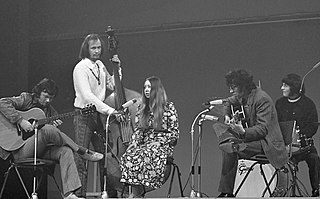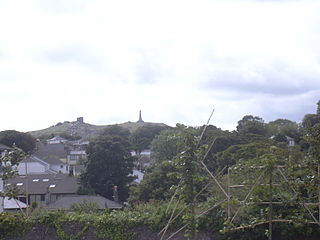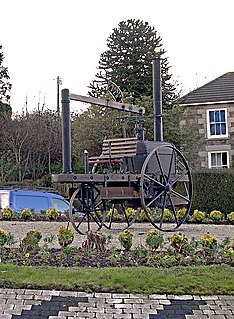
"Somebody to Love" is a rock song that was written by Darby Slick. It was originally recorded by The Great Society, and later by Jefferson Airplane. Rolling Stone magazine ranked Jefferson Airplane's version No. 274 on their list of the 500 Greatest Songs of All Time.

The folk music of England is tradition-based music, which has existed since the later medieval period. It is often contrasted with courtly, classical and later commercial music. Folk music has been preserved and transmitted orally, through print and later through recordings. The term is used to refer to English traditional music and music composed, or delivered, in a traditional style. English folk music has produced or contributed to several important musical genres, including sea shanties, jigs, hornpipes and dance music, such as that used for Morris dancing. It can be seen as having distinct regional and local variations in content and style, particularly in areas more removed from the cultural and political centres of the English state, as in Northumbria, or the West Country. Cultural interchange and processes of migration mean that English folk music, although in many ways distinctive, has particularly interacted with the music of Scotland. It has also interacted with other musical traditions, particularly classical and rock music, influencing musical styles and producing musical fusions, such as British folk rock, folk punk and folk metal. There remains a flourishing sub-culture of English folk music, which continues to influence other genres and occasionally gains mainstream attention.

Carn Brea is a civil parish and hilltop site in Cornwall, England, United Kingdom. The population of Carn Brea including Bosleake and Church Coombe was 8,013 at the 2011 census. The hilltop site is situated approximately one mile (1.6 km) southwest of Redruth. The settlements of Bosleake, Brea, Broad Lane, Carn Arthen, Carn Brea Village, Carnkie, Four Lanes, Grillis, Illogan Highway, Pencoys, Penhallick, Piece, Pool, Tolskithy, Tregajorran, Treskillard, Tuckingmill and West Tolgus are in the parish.
British folk rock is a form of folk rock which developed in the United Kingdom from the mid 1960s, and was at its most significant in the 1970s. Though the merging of folk and rock music came from several sources, it is widely regarded that the success of "The House of the Rising Sun" by British band the Animals in 1964 was a catalyst, prompting Bob Dylan to "go electric", in which, like the Animals, he brought folk and rock music together, from which other musicians followed. In the same year, the Beatles began incorporating overt folk influences into their music, most noticeably on their Beatles for Sale album. The Beatles and other British Invasion bands, in turn, influenced the American band the Byrds, who released their recording of Dylan's "Mr Tambourine Man" in April 1965, setting off the mid-1960s American folk rock movement. A number of British groups, usually those associated with the British folk revival, moved into folk rock in the mid-1960s, including the Strawbs, Pentangle, and Fairport Convention.
"The Twa Magicians", "The Two Magicians", "The Lady and the Blacksmith", or "The Coal Black Smith" is a British folk song. It first appears in print in 1828 in two sources, Peter Buchan's Ancient Ballads and Songs of the North of Scotland and John Wilson's Noctes Ambrosianae #40. It was later published as number 44 of Francis James Child's English and Scottish Popular Ballads. During the 20th century, versions of it have been recorded by a number of folk and popular musicians.
The mineral tramways trails are a series of trails located in mid west Cornwall, The trails are as follows:
Redruth School is a secondary school and sixth form college in Redruth, Cornwall, for 1,200 pupils aged 11 to 18. It was formed in 1976 by the merger of Redruth Grammar School and Tolgus Secondary School. Redruth School has emerged as a strong and more successful establishment after a period which involved some negative publicity and underperformance. Staff and pupils have enjoyed recent successes with 2010 GCSE results predicted to place the school in the top 25% of similar schools nationally. Regular assemblies are held for many different years; also there are four houses competing for the house cup.

I.A.Recordings was founded in 1982 by a small group of volunteers, to record past and present industries on film and video, as a resource for industrial archaeology (I.A.).

Redruth Grammar School in Redruth, Cornwall, was a boys school between 1907 and 1976.
Spriguns of Tolgus were a British folk rock group formed in 1972. They managed to obtain a record deal with a major label and the attention of some significant figures in the folk rock world. They produced four albums with growing originality and recognition but were unable to attain mainstream success and disbanded in 1978. Their lead singer, Mandy Morton, continued her solo career in Scandinavia and the band have now obtained a cult following.

Tolgus Mount is a village, valley, and district in the parish of Redruth in Cornwall, England, United Kingdom. It is located to the northwest of town of Redruth across the A30 road. Historically there were several mines in the area, mining tin and copper.

West Tolgus is a village in the Tolgus Valley in west Cornwall, England, United Kingdom. It lies just off the A30 road south of Illogan, northeast of Camborne and northwest of Redruth.

The West Cornwall Bryophytes Site of Special Scientific Interest is a group of seven locations of former mining activity, that form a single SSSI and Important Plant Area in western Cornwall, England, United Kingdom. The site is noted for its biological characteristics and derives its name from the rare bryophyte species found there.







